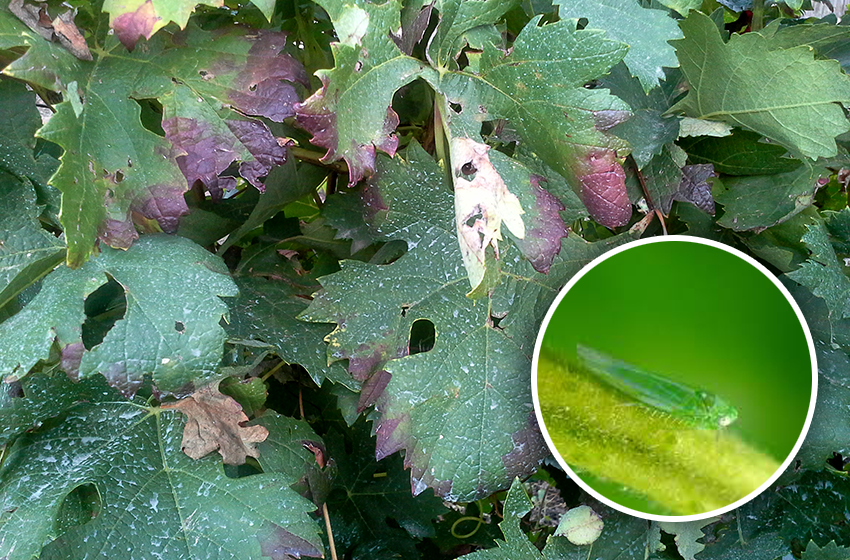Smaller green leafhopper: how to deal with this pest

In the summer months when temperatures are higher, the presence of the smaller green leafhopper increases due to the hotter conditions. This is the most favourable time for the development of these pests that cause concern to vine growers due to the proximity of key milestones in the grapevine campaign.
Seipasa has developed its Pirecris bionsecticde to control this pest. Its powerful shock effect quickly eliminates Cicadellidae populations, such as the smaller green leafhopper (Empoasca vitis) or the Scaphoideus titanus.
The smaller green leafhopper is an insect that is 2-3 mm long. At the larval stage it is usually located on the back of leaves and is easier to identify because its lack of wings, making it more difficult for it to move. When it develops into an adult it is harder to detect because it takes flight at the slightest movement.
The smaller green leafhopper attacks the veins in the leaf as it feeds on the plant's sap. It causes considerable damage to the plant as it stops vegetative growth and, hence, maturation of the fruit. The most obvious signs of damage caused by this pest are the drying and yellowing of the leaf edge.
The most intense pressure of the smaller green leafhopper on vines tends to occur during the summer months due to the high temperatures and hot, dry weather. This pest can result in considerable economic losses as the effect it causes can last until the campaign following the attack, reducing sprouting vigour and crop yield.
Control and treatment against the smaller green leafhopper
Pirecris is a bioinsecticide developed by Seipasa that performs extremely well in controlling and eliminating Cicadellidae (Scaphoideus titanus leafhopper and other species of insects). The product has also just had the extension of its label approved by the Spanish Ministry of Agriculture, Fisheries and Food, for the control of this pest on grapevines and table grapes.
Pirecris is designed based on an exclusive formulation thanks to the perfect balance between PI and PII molecules that form the active substance and that afford maximum insecticidal efficacy, both for field crops and greenhouse crops.
The micro-molecules in its formulation condense and generate a stable, balanced network throughout the solution, providing perfect coverage of the leaf and insect.
Pirecris provides a powerful insecticidal effect that acts by blocking the insect's respiratory system, resulting in its death. The product acts on eggs and larvae, very significantly reducing the number of new generations.
The following graph shows the quick shock effect on reducing smaller green leafhopper Empoasca vitis) populations. The technical trial carried out in the Italian region of Sicily on table grapes, with 2 applications every 7 days, highlights the rapid action of the product; it terminates the life cycle of this pest from the third day following its application.
Graph 1. Smaller green leafhopper larvae count on table grapes.
The active ingredient in Pirecris guarantees its shock effect, its impact and effectiveness. Furthermore, the hi-tech product formulation has meant that Seipasa has been able to patent it with a guaranteed green profile, based on antioxidants that improve persistence and a plant matrix that boosts its action.
Pirecris is certified for its use in organic agriculture (UNE 315500), and it is an ideal tool to include in Integrated Pest Management programmes. Furthermore, it is a 100% natural solution that does not leave residues on crops and has a short safety period.
Pirecris is in line with the needs of producers and consumers that tend towards an increasingly rational, sustainable, and environmentally-friendly type of agriculture. Apart from Spain, Pirecris for controlling and eliminating Cicadellidae on grapevines is also registered in major wine producing markets in Europe such as Italy, France and Portugal, as well as Greece.


.jpg)